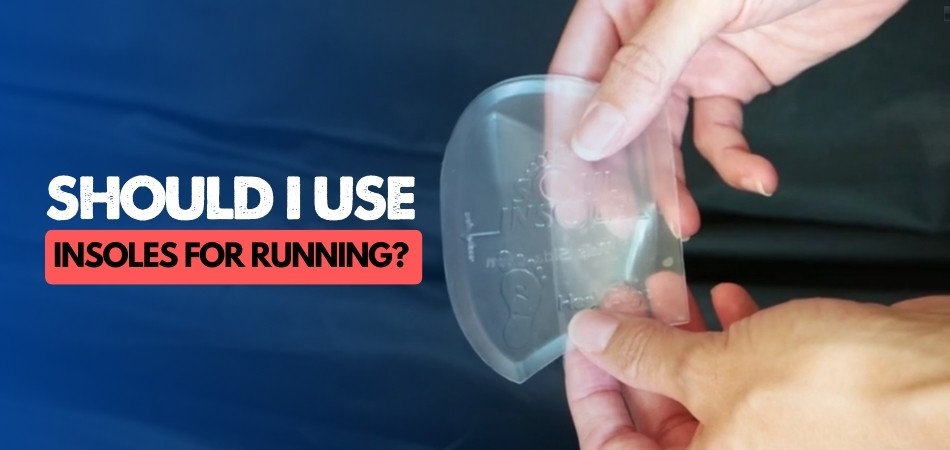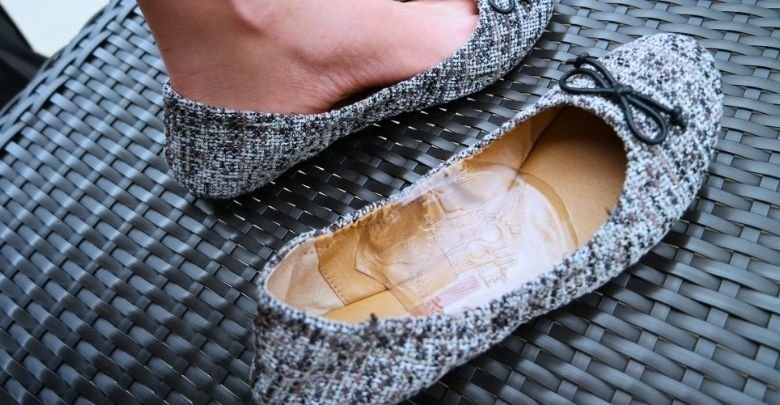Shoe insoles are specially designed inserts that provide additional support, comfort, and cushioning to your feet, especially during high-impact activities. If you’re someone who frequently runs or experiences discomfort, you might be asking yourself, “Should I use insoles for running?” The answer depends on your personal needs.
Insoles can be a lifesaver if you experience discomfort, need extra arch support while running, or want to improve foot alignment. They also reduce the risk of injuries by enhancing comfort and supporting foot mechanics during each stride. Runners, athletes, and those with specific foot conditions often rely on insoles to optimize their performance and prevent strain.
To find out how the right insoles can improve your running experience and provide lasting comfort during your run, keep reading.
Should I Use Insoles for Running?
Running can be hard on your feet, especially if you’re running regularly. If you’re dealing with discomfort or looking for ways to improve your experience, you might have wondered about insoles. Keep reading to find out why insoles could be a good idea for your runs.

Extra Comfort for Your Feet
Running can be tough on your feet, causing pain or soreness after a while. Insoles provide extra cushioning, making your shoes feel softer and more comfortable. They help reduce pressure on your feet, so you can run longer without feeling sore. A little extra comfort can make a huge difference in how you feel after running.
Better Arch Support
Some people have flat feet or high arches, which can lead to discomfort when running. Insoles are designed to provide better arch support, helping to distribute your weight more evenly. In case you need something more advanced, you can try soul insole for excellent support and comfort. This can reduce strain on your feet and legs, preventing pain or injury.
Prevent Injuries
When you’re running, the impact on your feet and joints can lead to injuries, especially if you’re running on hard surfaces. Insoles can help absorb some of that shock, reducing the stress on your knees and ankles. By protecting your feet and joints, insoles lower the chances of injuries like sprains or stress fractures.
Improved Foot Alignment
Sometimes, the way we walk or run isn’t quite right, and this can lead to pain or problems over time. Insoles can help correct the alignment of your feet, making sure they move in a more natural and balanced way. Proper alignment can help you run better and avoid pain in the long run.
Helps with Foot Fatigue
If you’re running for long periods, your feet can get tired and exhausted. Insoles provide extra support, which helps keep your feet from getting too tired. This can be especially helpful during long runs, where the fatigue from pressure on your feet can make things harder. With the right insoles, you can run longer without your feet feeling completely worn out.
How to Fit Soul Insoles Into Your Running Shoes?
If you’ve just got your soul insoles and want to use them in your running shoes, you’re making a smart move. Properly fitting them will give you more comfort and better support while running. It’s not hard, but it’s important to do it right. Let’s take a look at how to fit them easily:
Step 1: Remove Old Insoles
Before you place the Soul Insoles in your running shoes, start by removing the old insoles. Most running shoes come with insoles, but these need to be removed to make room for the new ones. Gently pull them out and set them aside. You need to make sure the new insoles fit into the shoe without any obstacles.
Step 2: Compare the Size
Take a look at the soul insoles and compare their size to your shoe’s inner sole. The insoles should fit snugly inside the shoe. If they’re too big, you can trim them to match the shape of your shoe. Use a pair of scissors to carefully cut along the edges of the insole if needed.
Step 3: Position the Insoles
Once you’ve trimmed the insoles to size (if necessary), place them in the shoe, making sure they lie flat. The insole should cover the entire bottom of the shoe without bunching up or folding. This will ensure they give you proper support throughout your run.
Step 4: Check for Comfort
After inserting the soul insoles, put on your shoes and walk around for a bit. Make sure they feel comfortable and secure. There should be no slipping, and your feet should feel supported in the arch and heel. If something feels off, adjust the position or check the fit.
Step 5: Test During Runs
Once you’re sure the soul insoles are comfortably in place, take them out for a test run. Pay attention to how your feet feel as you run. If you feel more comfortable and supported, then you’ve successfully fitted the insoles. Also, keep in mind that the soul insole lifespan depends on how often you run and the surfaces you use. Adjust as needed based on your experience.
Types of Insoles Might Not Be the Right Choice for Runners
Not all insoles are made for running, and choosing the wrong type can cause more harm than good. Some insoles may feel fine at first, but fail to support your feet properly during runs. Here are the types you should probably avoid.
- Soft Gel Insoles: While soft, they often lack the firm support needed for running and can cause foot strain over time.
- Fashion Insoles: Designed for style, not function, they provide little to no shock absorption or stability during running sessions.
- Memory Foam Insoles: These feel comfy at first but compress quickly, offering poor long-term support for active, high-impact running activities.
- Massaging Insoles: Massaging bumps might feel good standing still, but can cause discomfort and irritation while running long distances.
- One-Size-Fits-All Insoles: Feet and running styles vary greatly, so generic sizes rarely provide the correct fit or needed support.
- Heel-Only Cushions: Providing padding only to the heel, they ignore the arch and forefoot, leading to imbalanced foot support.
- Thin Dress Shoe Insoles: Too slim and not built for high-impact activities, they wear out fast and provide little running support.
- Arch-Lifting Insoles Without Stability: Arch lift without proper heel and forefoot support can lead to misalignment and possible injuries during running.
What Happens if You Run Without Proper Insoles?
Running without the right insoles might not seem like a big deal at first. But over time, small problems can grow into bigger ones. Your feet, knees, and even your back could suffer. Keep reading to learn what can happen and why insoles matter!

Foot Pain Increases
Without proper insoles, the pressure on your feet isn’t spread out evenly. This can lead to sharp pain, especially in the heels or arches. The longer you run, the worse the pain can get. Over time, even short runs might start to hurt.
Risk of Injuries
Keeping your balance while running without support is more difficult. This extra strain can lead to injuries like sprains or stress fractures. Even a small misstep can cause a painful injury. Good insoles help protect you from these problems.
Worn-Out Shoes
Insoles can extend the life of your running shoes. The soles can become uneven, making your feet roll inward or outward. This poor alignment can cause discomfort with every step. Replacing shoes more often gets expensive and frustrating.
Back Pain Problems
When your feet don’t get the support they need, your posture can suffer. This often leads to back pain from incorrect insoles, even if you don’t notice it right away. Running with poor posture puts extra pressure on your spine. Good insoles can help keep your whole body in better alignment.
Tired Legs and Feet
Without proper support, your feet and legs have to work much harder. This leads to tiredness much sooner during a run. Your muscles might feel sore even after short distances. Proper insoles help reduce this fatigue and keep you running longer.
What to Check Before Buying Insoles for Running?
Buying insoles for running isn’t as simple as picking the first pair you see. The right choice can make your runs easier and safer. It’s important to know what to check before you buy. Here’s what you need to know:

Proper Arch Support
One of the first things to check is the arch support of the insole. Good arch support keeps your feet stable while running. It also helps spread the pressure across your foot evenly. Without proper support, your feet can get sore fast.
Cushioning and Comfort
Running puts a lot of pressure on your feet, so you need enough cushioning. A soft but strong insole can make running much more comfortable. It can also help protect your feet from hard impacts. Always pick one that feels good when you walk or jog.
Correct Size and Fit
Insoles must fit well inside your running shoes without folding or slipping. If they move around, they can cause blisters and discomfort. Some insoles can be trimmed, but the basic size should match your shoe size. Always test the fit before using them for running.
Breathable Material
Your feet can get hot and sweaty while running, so breathable insoles are important. Good airflow keeps your feet cooler and drier. This can help you avoid blisters and bad smells. Look for insoles made with mesh or moisture-wicking materials.
Durability and Strength
Running wears down shoes and insoles faster than walking. Make sure you choose insoles that are built to last many runs. Strong materials mean the insoles will keep giving good support longer. Good durability saves you money in the long run.
FAQs About Should I Use Insoles for Running?
There are probably a lot of questions you have if you are considering using insoles for running. Picking the right insoles and knowing how to use them can make a big difference in your comfort and performance. Below are answers to some common questions to help you make the best choice:
Are Custom Insoles Better Than Store-Bought Ones?
Custom insoles can offer a perfect fit for your feet and specific running style. However, high-quality store-bought insoles also provide great support and are more affordable for most runners unless you have a serious foot condition.
How Do Insoles Help With Heel Pain?
Insoles help cushion your heels and reduce the shock impact that causes pain, especially on hard surfaces. By providing additional padding and support in the heel area, insoles can ease discomfort from conditions like plantar fasciitis. The right insoles also help distribute your weight evenly, preventing further strain on your heels.
Are Insoles Necessary for Every Runner?
Insoles aren’t strictly necessary for every runner, but they can be beneficial for those experiencing discomfort or foot problems. If you feel pain in your feet, knees, or back while running, or if your shoes don’t provide enough support, insoles can make a noticeable difference in your running experience.
Can I Use Insoles in Any Type of Running Shoe?
Most insoles can be used in a wide variety of running shoes, as long as they fit correctly. However, if your running shoes already have built-in arch support or cushioning, you might not need additional insoles. Always make sure the insole fits snugly inside the shoe for optimal comfort and performance.
How Long Do Insoles Last for Runners?
The lifespan of insoles depends on the frequency of use and the type of running you do. Typically, insoles last around six months to a year with regular use. If you notice the cushioning has worn down or they no longer provide the same level of support, it’s time to replace them.
Can Insoles Help With Flat Feet?
Yes, insoles can provide extra support for flat feet. They help by offering arch support that encourages a more natural foot position, reducing the strain that flat feet can cause. The right insoles can improve alignment and help prevent pain and fatigue associated with flat feet.
What is the Difference Between Custom Insoles and Store-Bought Insoles?
Custom insoles are specifically made for your feet, taking into account your unique foot structure and running style. Store-bought insoles, while effective, are designed to work for a wider range of foot types. Custom insoles tend to offer more precise support, but store-bought options are a good, cost-effective alternative.
Final Thoughts
When you run often, you put a lot of pressure on your feet, knees, and back. That’s why choosing the right insoles can make a huge difference. Their comfort, proper arch support, and cushioning help prevent injuries caused by poor alignment. If you’ve ever asked yourself, “Should I use insoles for running?”, the answer depends on your personal needs and the discomfort you may feel.
Quality insoles like Soul Insole can ease foot pain, reduce tiredness, and even protect against back pain from incorrect insoles. Remember to pick insoles that fit well, offer breathability, and provide the support your feet need. Taking care of your feet now will keep you running comfortably for a long time!






